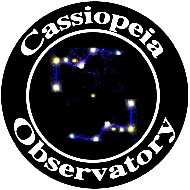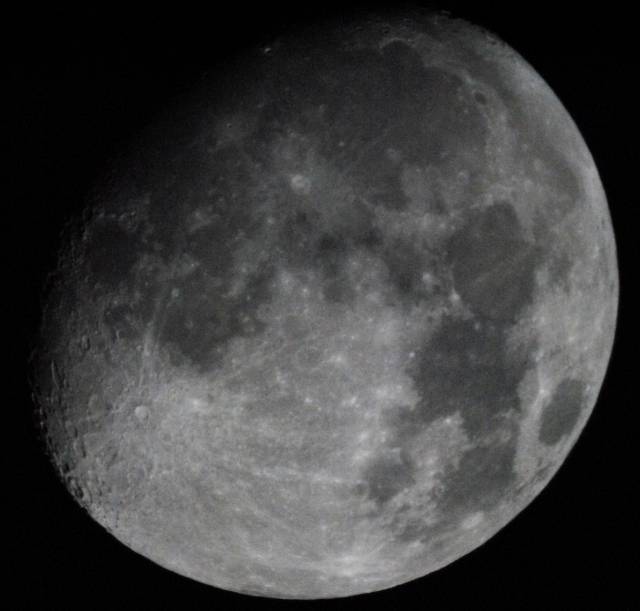 |
Last updated: 24 March 2010 |
|
|
| This page documents astrophotography comments, tips, and photos. Contributions welcome. Be certain to see the other articles on the main Astrophotography page. |
Subject: Starting astrophotography Sent: Wednesday, March 24, 2010 09:39:22 From: Paul Forbes (PForbes@apotex.com) If you were to recommend astrophotography equipment to a newbie what is a good platform to start with. I have no issue spending money for simplicity and expandability. Thanks for your advice ETX-LS6 3.5 Video Monitor Paul Forbes Burlington Ontario CanadaMike here: As to astrophotography, you may be able to start with what you have. Lots of info on the Helpful Information: Astrophotography page. If you want to jump in and start doing some really good astrophotography and you are willing to use a Windows computer at the telescope, check out the Meade DSI imagers.
And:
Thanks Mike.........very helpful Paul Forbes
Subject: Re: Poor focus with ETX 90 and Nikon D3000... Sent: Tuesday, January 26, 2010 22:33:04 From: Jason Witt (witts11@yahoo.com) Just thought I'd send along the best pic I took tonight before I had to head in... I felt the frostbite setting in. -10 F windchill... Yowza! Anyway, I just did a little minor tweaking with the contrast, and I'm fairly happy, although the focus is still a little off. I'll worry about that more when my fingers can tolerate it. Believe it or not, I took this with continuous shot mode while holding the camera with one hand and holding down the shutter button with the other. For one, my remote will probably get delivered tomorrow, and the other is that it seems I'm going to need a counterbalance. There's just too much weight at the back end, which is why I literally needed to hold the camera tonight. Anyway, thanks again! You rock! :D Peace, Jason

Subject: Re: Poor focus with ETX 90 and Nikon D3000... Sent: Tuesday, January 19, 2010 17:23:41 From: Jason Witt (witts11@yahoo.com) Hello, my friend... I just wanted to give you a quick update... I was able to snap off about 4 pictures of the crescent moon tonight before the clouds rolled in. :( But I definitely noticed something... The camera definitely vibrates slightly when the shutter opens. :( I thought maybe utilizing the Mirror Lock Up would remedy this problem, but I can't seem to figure out how to turn it on with my Nikon D3000... It just tells me that it's not available with the current settings... But I can't seem to figure out what the right settings would be to make it available, or if that would even accomplish anything. But then I thought, what if I were to get a shutter release remote and change to continuous picture mode... Wouldn't that just keep the mirror locked and eliminate the vibration problem by the time it got to the 3rd or 4th picture? Any thoughts? I attached the best moon pic of the 4 that I took, but I know I should be able to get much better than this. Thanks again, Mike. Peace, JasonMike here: Don't know about the mirror lockup on the Nikon D3000. I know that my D70 DSLR doesn't have it, hence I use the remote. As to the continuous photo mode, might work but it might take more than 3 or 4 images before the vibrations dampen out. As to your image, I adjusted the "levels" on it, resulting in the photo attached. Keep in mind that some editing in your favorite photo editing tool can dramatically improve images.

And:
Thanks for the improved moon image. :) Unfortunately I no longer own Photoship Elements, but I have been using the contrast and brightness correction features on Windows Picture Viewer a little bit, which does seem to help a bit. The .jpeg I sent you was the raw image prior to adjustment, but you did a nice job on it. :P I remember Photoshop having something which could improve 'sharpness' that might come in handy if I can get my hands on it again. Also I ordered a shutter release remote for my Nikon this morning that should arrive within a week, so I'll be able to try my continuous photo theory once it arrives and I get a clear night. Thanks again! Peace, JasonMike here: I believe you can use Astrostack or Registax (on Windows) for some editing. Both are free. Levels and sharpness controls are very useful.
Subject: Re: Poor focus with ETX 90 and Nikon D3000... Sent: Saturday, January 16, 2010 10:29:51 From: Jason Witt (witts11@yahoo.com) Thank you so much for getting back to me so quickly, especially since I'm planning on heading out tonight to take more photos. I don't suspect that there is any movement from the mirror as once I get the object (in this case Jupiter/Mars) in the eyepiece and flip the mirror to the camera, I keep "re-acquiring" the target via the viewfinder of the camera... I would hope anyway that the mirror wouldn't still be vibrating 5, 10, 15 minutes after I've flipped the mirror. I also don't have the motor running since it can't track planets anyway, and I don't have to use long exposures for planets. I'll attach cropped images of the best that I've been able to get thus far. I'm not familiar with the "hat trick", though I am a hockey fan. ;) Would you mind describing that to me or linking me to a URL that explains what you mean? Thank you again for all of your help... I truly, truly appreciate all that you do for everyone out there with these questions. Peace, Jason WittMike here: Some points. OK, so no DSLR mirror-induced vibrations (is the D3000 viewfinder a live view of what the sensor sees?). However, at the image scale when shooting through the telescope, even at prime focus, some motion may be seen unless your exposure is very short. So, I'd recommend letting the telescope track, even during short exposures. And yes, focusing is a challenge. There are several ways to focus: by eye (use a magnifier on the camera's viewfinder), take short test exposures while changing the focus position slightly and check them on the camera's LCD or on a computer until you have an in-focus image, use a "Hartmann Mask" (see the Helpful Information: Astrophotography page), or use something like the "Stiletto Focuser" or the "Spike-a Bahtinov Mask" (see the Accessory Reviews: Astrophotography page). As to the "hat trick" method, I am writing an article with photos right now. I'll post it on the next ETX Site update (in about 3-4 days). Also, see the article "Nifty "Hat Trick" Shutter" on the Helpful Information: Astrophotography page.
And:
Thanks so much... I'll play around with the focus tonight... Do you suppose it's possible that even though it looks like it's in focus in the viewfinder that it's taking the picture out of focus anyway? I'm beginning to suspect that might be the case. I'll also look into those accessories. Peace, JasonMike here: At the small scale in the viewfinder, what appears to be sharply infocus, may in fact be slightly out-of-focus. Doing test exposures and then magnifying them on the camera's LCD (if the camera has a "zoom" function for viewing images) or viewing them on a computer can really help.
And:
Again, thank you... I can't wait to get out tonight. I'll let you know how it goes and give you all the credit when it turns out. :PMike here: Credit goes to all who came before me!
And:
Well... More "freezing fog" tonight... It's looking like it's going to be a rough week for stargazing... By the time it clears up I'll have a full moon out blocking everything out. Oh, well... At least I'll get some practice time in on the moon, which is probably a good thing. Tell me... Is it likely that if I can get my camera fine tuned to the moon that I can keep that focus for planets and deep sky objects? Or will there be slight adjustments needed depending on the object? Thanks again Mike... Peace, JasonMike here: You can consider all astronomical objects to be at "infinity" for the purpose of focusing. So, focusing on the moon will be good for other objects. Of course, you have to be able to repeat that focus setting. Some owners mark the position of the knob. Others use more fancy techiques like focusing mechanisms with digital readouts of position.
And:
Excellent! Marking the focus knob was exactly my idea... Obviously it's going to be much easier getting my focus down with the moon than with others objects, so now I'm looking forward to being able to have that as a focal point next weekend. :) Maybe the moon isn't so bad after all. :PMike here: The moon makes an excellent subject to start learning how to take photographs with a telescope.
Subject: Poor focus with ETX 90 and Nikon D3000... Sent: Saturday, January 16, 2010 00:23:15 From: Jason Witt (witts11@yahoo.com) Greetings, sir, and thank you in adcance for your help. I have just begun to try astrophotography with my Meade ETX-90 and a newly purchased Nikon D3000 that I have mounted to the back via a T-Adapter. My first attempts have proven less than fruitful, as my "test runs" from my driveway have only produced blurry results of Mars and Jupiter. I have been taking the pictures with various shutter speeds, though none faster than 1/50 due to the faintness of the planets given the fairly high sky pollution in my neighborhood, and I have been using the 10-second self-timer to minimize any vibration effects. I am wondering if darker skies would produce better clarity since I would be able to use a faster shutter speed, or am I merely failing to focus as well as I think I am? Is there a specific resource that you could point me to that may be of the most help? Thank you again, Mike.Mike here: Could you be seeing the effects of vibrations induced by the camera's mirror movement? With low-end mounts and even high-end mounts at high magnifications, the movement of the camera's mirror during the exposure will cause the telescope to shake. Try using the "hat trick" method. It takes some practice to get good at it but it is very doable. I use the technique a lot with my telescopes and Nikon D70 DSLR.
Go to the April-December 2009 Astrophotography - Tips page.
Go to the January-March 2009 Astrophotography - Tips page.
Go to the May-December 2008 Astrophotography - Tips page.
Go to the February-April 2008 Astrophotography - Tips page.
Go to the July-December 2007 Astrophotography - Tips page.
Go to the January-June 2007 Astrophotography - Tips page.
Go to the October-December 2006 Astrophotography - Tips page.
Go to the July-September 2006 Astrophotography - Tips page.
Go to the April-June 2006 Astrophotography - Tips page.
Go to the January-March 2006 Astrophotography - Tips page.
Go to the November-December 2005 Astrophotography - Tips page.
Go to the September-October 2005 Astrophotography - Tips page.
Go to the July-August 2005 Astrophotography - Tips page.
Go to the May-June 2005 Astrophotography - Tips page.
Go to the March-April 2005 Astrophotography - Tips page.
Go to the January-February 2005 Astrophotography - Tips page.
Go to the October-December 2004 Astrophotography - Tips page.
Go to the July-September 2004 Astrophotography - Tips page.
Go to the April-June 2004 Astrophotography - Tips page.
Go to the January-March 2004 Astrophotography - Tips page.
Go to the 2003 Astrophotography - Tips page.
Go back to the Astrophotography Page.
Go back to my ETX Home Page.